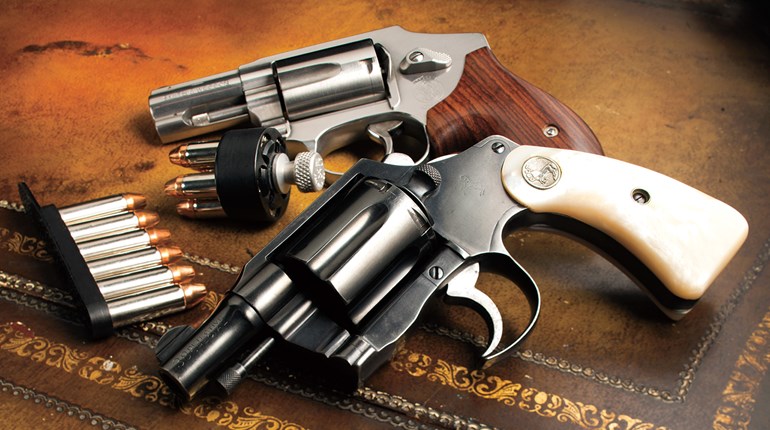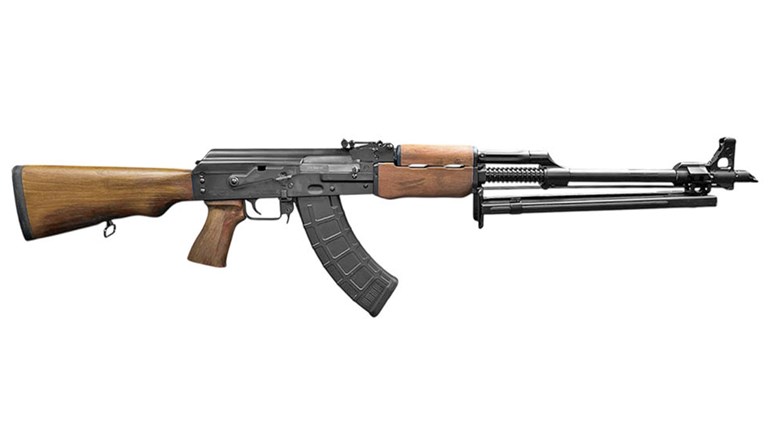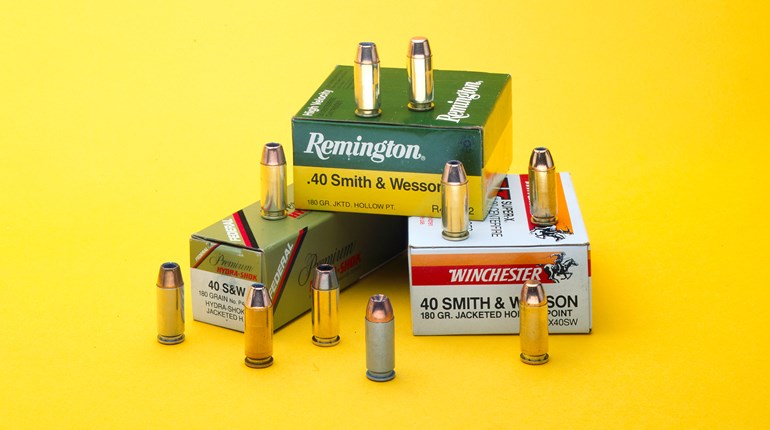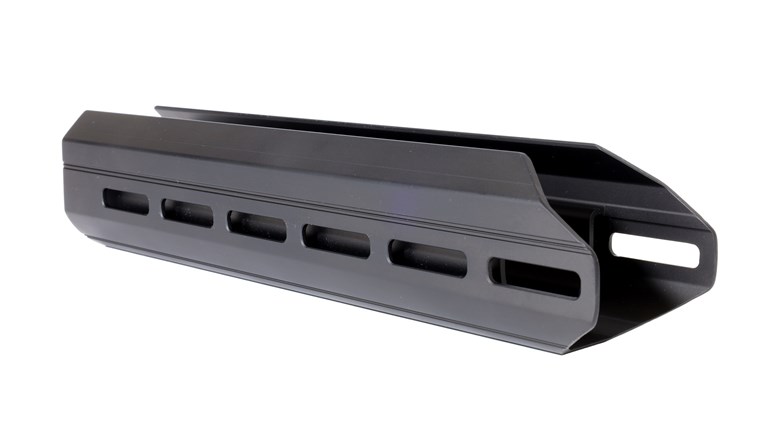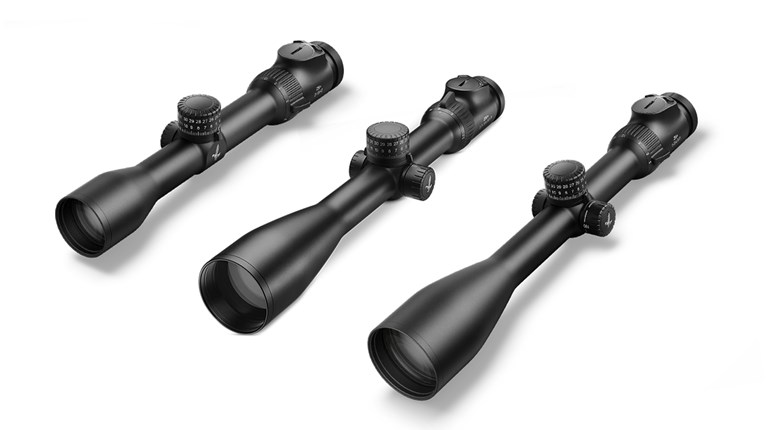Today, we’re dedicating a special “Spotlight” episode of our series to the Ruger LCP II. There are a ton of concealed-carry guns on the market, but a select few have risen above the rest in terms of popularity. The Ruger LCP II is one of those guns. We’re going to talk about why that is and what features of this pistol make it particularly well-suited for concealed carry.
In a larger sense, the Ruger LCP II is the embodiment of a particular class of CCW pistols: the pocket .380. In my experience, nothing draws more love or hate than the pocket .380 concept, and we’ll examine both sides of that issue.
In the pro column is definitely the size. Compared to standard compacts like the Glock G19 or even subcompacts like the Smith & Wesson Shield, it’s absolutely no contest as to what’s most easily carried. Frankly, there aren’t many centerfire handguns out there smaller than the LCP II, and that’s one of the reasons why it’s so popular. You can put this in a wallet holster, a pocket holster, an ankle holster, you can carry it inside your waistband, you can tuck it into an off-body holster inside your purse or backpack, and it’ll fit pretty much any space you can dedicate to it.
Unfortunately, it’s this small size that’s also the cause of some of this gun’s negative attributes. As I said before, people either love or hate the pocket .380, and those that hate it usually have a couple reasons. First, the .380 ACP just is nowhere near the same class as other defensive handgun rounds. It’s slower, smaller and weaker than your nines, forties and forty-fives.
Once you get into a package that’s this size, there’s only so much room for a cartridge, and about the only positive thing you can say about the .380 ACP is that at least it isn’t a .32 or a .25 ACP. I have to say, though, that recent years have seen tremendous leaps in the capabilities of this round. Enhanced projectiles like those found in the Black Hills HoneyBadger or the Lehigh Defense Xtreme Penetrator have made this round much more potent, but there’s only so much you can get out of the cartridge.
The second reason why many dislike pocket .380s like the Ruger LCP II is that they just aren’t particularly pleasant to shoot. We’re all in agreement that practicing with your personal-defense pistol is a must, and while the .380 ACP isn’t particularly powerful, there’s still plenty of recoil energy there that’s concentrated into the slim backstrap of this small gun. That starts to smart after a few mags.
I will say that Ruger’s made great strides in the design of the LCP II, which is obviously the second generation of the popular LCP lineup. The grip ergonomics are much improved over the original design, and while it doesn’t make the gun exactly a dream to shoot, it’s a much better range companion than the original, and that’s not all that Ruger did to enhance the shootability of this pocket pistol.
The original LCP had these tiny nubs on the top of the slide for aiming, and I’m sticking to that phrasing, since I can’t really bring myself to call them sights. The LCP II can actually be aimed! What a concept! The irons are integrated into the slide, so they aren’t adjustable, but that’s not a huge deal, since this isn’t exactly going to be your 50-yard Bullseye pistol.
One of the other enhancements Ruger made in the LCP II is the inclusion of a last-round bolt hold-open. While the likelihood of having to execute a reload with a pocket pistol during a defensive engagement is slim, it’s certainly a possibility you might face, and the slide locking back is a good visual indication that you’re out of rounds, saving you from having to diagnose the gun and determine its status when it goes “Click!” instead of “Bang!” If you’re trying to stop an attacker, you aren’t going to be counting rounds as you fire, so slide lock basically yells to your adrenaline-soaked mind that you’re empty and need a reload.
One of the other big improvements on the LCP II is the trigger. Both generations of the LCP are hammer-fired, but the first-gen gun had a long, heavy trigger pull that made it difficult to shoot accurately and consistently. The so-called “Secure Action” trigger on the LCP II feels almost like a single-action trigger, and that reduced trigger travel and pull weight means you can be much more precise with this platform.
Finally, there’s the price. While we certainly encourage the “buy once, cry once” philosophy in most cases, the fact is that the LCP II is reliable, durable and affordable by pretty much any metric. You can find examples priced right around the $250 mark, which is half the cost of most double-stack, polymer-frame nines on the market.
Most of all, though, dedicated CCW requires a commitment to carry constantly and consistently. You can’t choose when you’re attacked, so the only way to be sure you’ll be armed and ready to defend yourself in a crisis is to carry every moment you possibly can. It’s far easier to pack a pocket pistol every day of your life than a duty-size 9mm. While we’ll encourage everyone watching to carry as much gun as they can, the first priority ought to be to just carry a gun. And the LCP II is one of the easiest-to-carry options out there.
But remember, the Ruger LCP II is just one of an incredible number of CCW guns on the market today, and it’s important for everyone to find the firearm that works best for them. Looking for something different than what you see here? Stay tuned to “I Carry” to see more concealed-carry setups.
Explore The NRA Universe Of Websites
- Clubs and Associations
- Competitive Shooting
- Events and Entertainment
-
Firearms Training
- NRA Gun Safety Rules
- Firearm Training
- Become An NRA Instructor
- Become A Training Counselor
- NRA Range Safety Officers
- Shooting Sports Coach Development
- Adaptive Shooting
- NRA Gunsmithing Schools
- NRA Online Training
- NRA Program Materials Center
- NRA Marksmanship Qualification Program
- Find A Course
- NRA CCW
- NRA Training Course Catalog
- Giving
- History
-
Hunting
- Hunter Education
- Youth Hunter Education Challenge
- NRA Whittington Center
- NRA Hunters' Leadership Forum
- Great American Outdoor Show
- Hunters for the Hungry
- American Hunter
- Hunting Legislation Issues
- State Hunting Resources
- NRA Institute for Legislative Action
- American Rifleman
- Adaptive Hunting Database
- Outdoor Adventure Partner of the NRA
- Law Enforcement, Military, Security
- Media and Publications
-
Membership
- Join The NRA
- NRA Member Benefits
- Manage Your Membership
- NRA Store
- NRA Whittington Center
- NRA Endorsed Member Insurance
- NRA Membership Recruiting
- NRA State Associations
- NRA Membership For Women
- NRA Life Membership
- Renew or Upgrade Your Membership
- NRA Junior Membership
- NRA Business Alliance
- NRA Industry Ally Program
- Politics And Legislation
-
Recreational Shooting
- America's Rifle Challenge
- NRA Whittington Center
- Women's Wilderness Escape
- NRA Day
- The NRA Range
- Home Air Gun Program
- Adaptive Shooting
- Range Services
- NRA Member Benefits
- Great American Outdoor Show
- NRA Springfield M1A Match
- Shooting Illustrated
- Firearm Training
- NRA Marksmanship Qualification Program
- NRA Training Course Catalog
- Women On Target® Instructional Shooting Clinics
- Safety and Education
- Scholarships, Awards and Contests
- Shopping
- Volunteering
-
Women's Interests
- NRA Membership For Women
- NRA Women's Network
- Women On Target® Instructional Shooting Clinics
- Refuse To Be A Victim®
- Women's Wilderness Escape
- Women's Programs Endowment
- Jeanne E. Bray Memorial Scholarship
- Marion P. Hammer Women Of Distinction Award
- Sybil Ludington Women's Freedom Award
- Women's Wildlife Management / Conservation Scholarship
- Become An NRA Instructor
-
Youth Interests
- Eddie Eagle Treehouse
- Scholarships, Awards & Contests
- NRA Day
- NRA Marksmanship Qualification Program
- Youth Education Summit
- Adventure Camp
- Youth Hunter Education Challenge
- National Junior Shooting Camps
- Youth Wildlife Art Contest
- Home Air Gun Program
- NRA Junior Membership
- NRA Family
- Eddie Eagle GunSafe® Program
- NRA Gun Safety Rules
- Collegiate Shooting Programs
- National Youth Shooting Sports Cooperative Program
- Request for Eagle Scout Certificate















